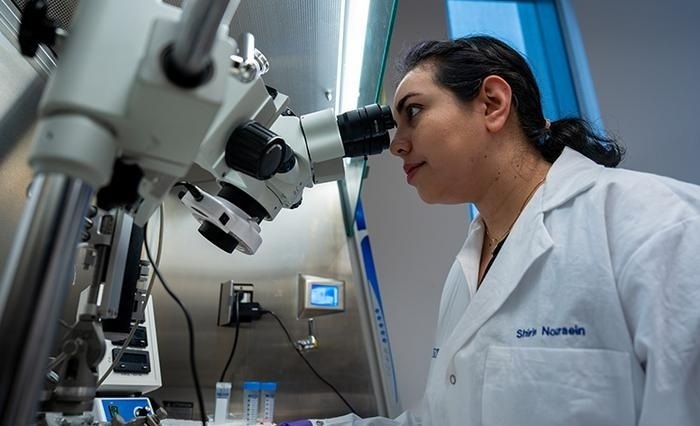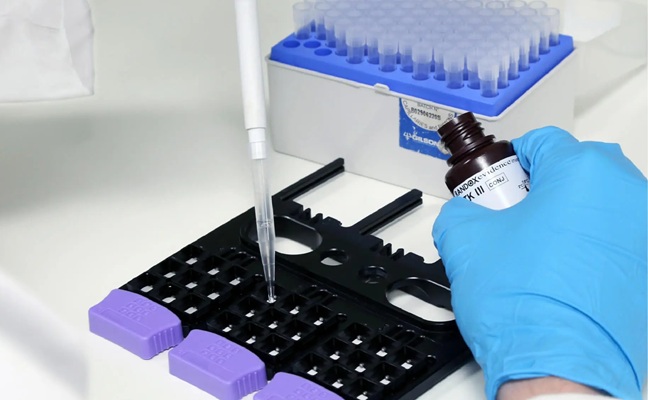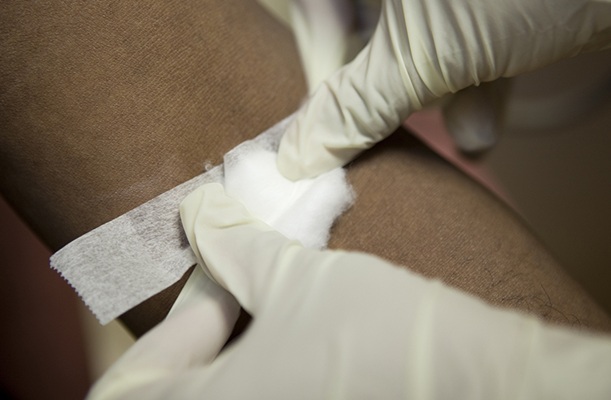Automated Extraction of FFPE Tissue for High-Risk HPV Testing
|
By LabMedica International staff writers Posted on 07 Jul 2016 |
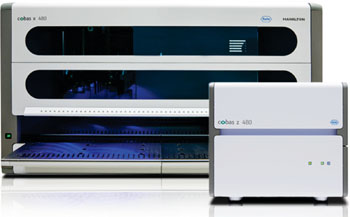
Image: The automated cobas 4800 platform system (Photo courtesy of Roche).
The testing for high-risk human papillomavirus (HR-HPV) in head and neck squamous cell carcinomas is important for both prognostication and clinical management. Several testing platforms are available for HR-HPV; however, effective alternative automated approaches are needed.
High-risk human papillomavirus (HR-HPV) is now a well-established etiologic agent in a subset of head and neck squamous cell carcinomas (HNSCCs) that has an incidence on the rise, particularly with respect to oropharyngeal squamous cell carcinoma (OPSCC), which demonstrates an association with transcriptionally active virus in up to 80% of tumors.
Pathologists from Massachusetts General Hospital (Boston, MA, USA) collected from 62 archival specimens of formalin-fixed, paraffin-embedded (FFPE) samples of HNSCC. Overall OPSCC represented slightly more than half (55%) of the HNSCCs tested. These were prepared using the automated system by deparaffinization and dehydration followed by tissue lysis. Corresponding FFPE samples were evaluated for HR-HPV by in situ hybridization (ISH) and p16 by immunohistochemistry. Discrepant cases were adjudicated by polymerase chain reaction (PCR).
The scientists used the automated Roche cobas 4800 System Platform (Roche Diagnostics, Risch-Rotkreuz, Switzerland), which consists of an automated instrument for sample preparation and DNA extraction followed by and coupled to a thermocycler and analyzer for performance of real-time PCR and subsequent detection of target DNA sequences. Immunohistochemical expression of p16 was evaluated by deparaffinizing 5µm FFPE sections of HNSCCs and performing antigen retrieval using the Leica Bond protocol (Leica Biosystems, Buffalo Grove, IL, USA).
The investigators found 32/62 (52%) of formalin-fixed, paraffin-embedded tumors were positive for HR-HPV by cobas. There were 28/32 (88%) of cases were the HPV 16 subtype and 12% (4 /32) were other HR-HPV subtypes. Corresponding testing with ISH was concordant in 92% (57 /62). Compared with the adjudication PCR standard, there were three false-positive cases by cobas. For the OPSCC, cobas had positive and negative predictive values of 100%, whereas for non-OPSCC, the positive predictive value was 57% and the negative predictive value was 100%.
The authors concluded that concordance in HNSCC HR-HPV status between cobas and ISH was more than 90%. The cobas demonstrated a sensitivity of 100% and a specificity of 91% for detection of HR-HPV. They said the advantages favoring cobas included its automation, cost efficiency, objective results, and ease of performance. The study was published in an early online edition of the journal Archives of Pathology & Laboratory Medicine.
Related Links:
Massachusetts General Hospital
Roche Diagnostics
Leica Biosystems
High-risk human papillomavirus (HR-HPV) is now a well-established etiologic agent in a subset of head and neck squamous cell carcinomas (HNSCCs) that has an incidence on the rise, particularly with respect to oropharyngeal squamous cell carcinoma (OPSCC), which demonstrates an association with transcriptionally active virus in up to 80% of tumors.
Pathologists from Massachusetts General Hospital (Boston, MA, USA) collected from 62 archival specimens of formalin-fixed, paraffin-embedded (FFPE) samples of HNSCC. Overall OPSCC represented slightly more than half (55%) of the HNSCCs tested. These were prepared using the automated system by deparaffinization and dehydration followed by tissue lysis. Corresponding FFPE samples were evaluated for HR-HPV by in situ hybridization (ISH) and p16 by immunohistochemistry. Discrepant cases were adjudicated by polymerase chain reaction (PCR).
The scientists used the automated Roche cobas 4800 System Platform (Roche Diagnostics, Risch-Rotkreuz, Switzerland), which consists of an automated instrument for sample preparation and DNA extraction followed by and coupled to a thermocycler and analyzer for performance of real-time PCR and subsequent detection of target DNA sequences. Immunohistochemical expression of p16 was evaluated by deparaffinizing 5µm FFPE sections of HNSCCs and performing antigen retrieval using the Leica Bond protocol (Leica Biosystems, Buffalo Grove, IL, USA).
The investigators found 32/62 (52%) of formalin-fixed, paraffin-embedded tumors were positive for HR-HPV by cobas. There were 28/32 (88%) of cases were the HPV 16 subtype and 12% (4 /32) were other HR-HPV subtypes. Corresponding testing with ISH was concordant in 92% (57 /62). Compared with the adjudication PCR standard, there were three false-positive cases by cobas. For the OPSCC, cobas had positive and negative predictive values of 100%, whereas for non-OPSCC, the positive predictive value was 57% and the negative predictive value was 100%.
The authors concluded that concordance in HNSCC HR-HPV status between cobas and ISH was more than 90%. The cobas demonstrated a sensitivity of 100% and a specificity of 91% for detection of HR-HPV. They said the advantages favoring cobas included its automation, cost efficiency, objective results, and ease of performance. The study was published in an early online edition of the journal Archives of Pathology & Laboratory Medicine.
Related Links:
Massachusetts General Hospital
Roche Diagnostics
Leica Biosystems
Latest Pathology News
- AI Tool Outperforms Doctors in Spotting Blood Cell Abnormalities
- AI Tool Rapidly Analyzes Complex Cancer Images for Personalized Treatment
- Diagnostic Technology Performs Rapid Biofluid Analysis Using Single Droplet
- Novel Technology Tracks Hidden Cancer Cells Faster
- AI Tool Improves Breast Cancer Detection
- AI Tool Predicts Treatment Success in Rectal Cancer Patients
- Blood Test and Sputum Analysis Predict Acute COPD Exacerbation
- AI Tool to Transform Skin Cancer Detection with Near-Perfect Accuracy
- Unique Immune Signatures Distinguish Rare Autoimmune Condition from Multiple Sclerosis
- Simple Optical Microscopy Method Reveals Hidden Structures in Remarkable Detail
- Hydrogel-Based Technology Isolates Extracellular Vesicles for Early Disease Diagnosis
- AI Tool Improves Accuracy of Skin Cancer Detection
- Highly Sensitive Imaging Technique Detects Myelin Damage
- 3D Genome Mapping Tool to Improve Diagnosis and Treatment of Genetic Diseases
- New Molecular Analysis Tool to Improve Disease Diagnosis
- Tears Offer Noninvasive Alternative for Diagnosing Neurodegenerative Diseases
Channels
Clinical Chemistry
view channel
Chemical Imaging Probe Could Track and Treat Prostate Cancer
Prostate cancer remains a leading cause of illness and death among men, with many patients eventually developing resistance to standard hormone-blocking therapies. These drugs often lose effectiveness... Read more
Mismatch Between Two Common Kidney Function Tests Indicates Serious Health Problems
Creatinine has long been the standard for measuring kidney filtration, while cystatin C — a protein produced by all human cells — has been recommended as a complementary marker because it is influenced... Read moreMolecular Diagnostics
view channel
Four-Gene Blood Test Rules Out Bacterial Lung Infection
Lower respiratory tract infections (LRTIs) are among the most common reasons for antibiotic prescriptions, yet distinguishing bacterial infections from viral ones remains notoriously difficult.... Read more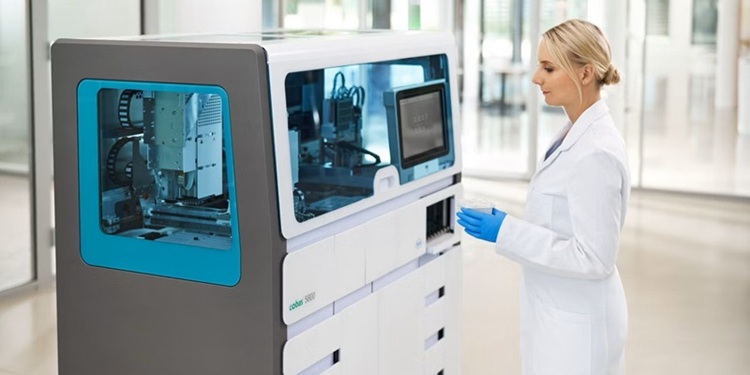
New PCR Test Improves Diagnostic Accuracy of Bacterial Vaginosis and Candida Vaginitis
Bacterial vaginosis (BV) impacts approximately 25% of women of reproductive age, while up to 75% of women experience candida vaginitis (CV) at least once in their lifetime. Vaginal symptoms are one of... Read moreHematology
view channel
Platelet Activity Blood Test in Middle Age Could Identify Early Alzheimer’s Risk
Early detection of Alzheimer’s disease remains one of the biggest unmet needs in neurology, particularly because the biological changes underlying the disorder begin decades before memory symptoms appear.... Read more
Microvesicles Measurement Could Detect Vascular Injury in Sickle Cell Disease Patients
Assessing disease severity in sickle cell disease (SCD) remains challenging, especially when trying to predict hemolysis, vascular injury, and risk of complications such as vaso-occlusive crises.... Read more
ADLM’s New Coagulation Testing Guidance to Improve Care for Patients on Blood Thinners
Direct oral anticoagulants (DOACs) are one of the most common types of blood thinners. Patients take them to prevent a host of complications that could arise from blood clotting, including stroke, deep... Read moreImmunology
view channel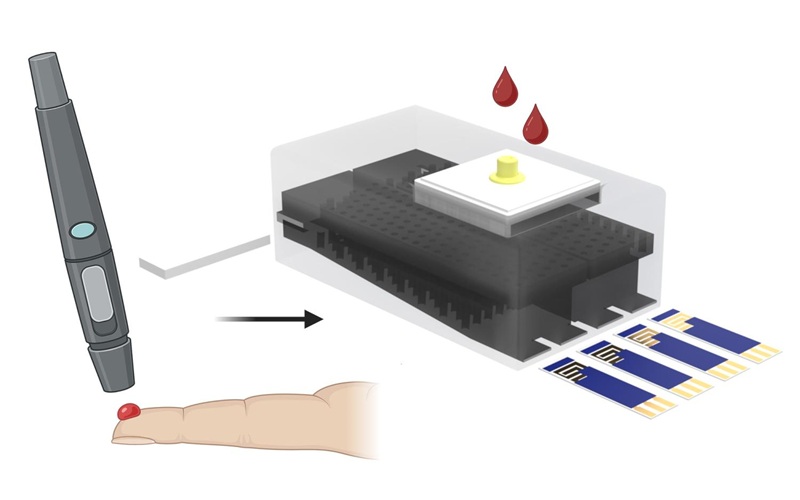
New Test Distinguishes Vaccine-Induced False Positives from Active HIV Infection
Since HIV was identified in 1983, more than 91 million people have contracted the virus, and over 44 million have died from related causes. Today, nearly 40 million individuals worldwide live with HIV-1,... Read more
Gene Signature Test Predicts Response to Key Breast Cancer Treatment
DK4/6 inhibitors paired with hormone therapy have become a cornerstone treatment for advanced HR+/HER2– breast cancer, slowing tumor growth by blocking key proteins that drive cell division.... Read more
Chip Captures Cancer Cells from Blood to Help Select Right Breast Cancer Treatment
Ductal carcinoma in situ (DCIS) accounts for about a quarter of all breast cancer cases and generally carries a good prognosis. This non-invasive form of the disease may or may not become life-threatening.... Read moreMicrobiology
view channelRapid POC Tuberculosis Test Provides Results Within 15 Minutes
Tuberculosis remains one of the world’s deadliest infectious diseases, and reducing new cases depends on identifying individuals with latent infection before it progresses. Current diagnostic tools often... Read more
Rapid Assay Identifies Bloodstream Infection Pathogens Directly from Patient Samples
Bloodstream infections in sepsis progress quickly and demand rapid, precise diagnosis. Current blood-culture methods often take one to five days to identify the pathogen, leaving clinicians to treat blindly... Read moreTechnology
view channel
AI Saliva Sensor Enables Early Detection of Head and Neck Cancer
Early detection of head and neck cancer remains difficult because the disease produces few or no symptoms in its earliest stages, and lesions often lie deep within the head or neck, where biopsy or endoscopy... Read more
AI-Powered Biosensor Technology to Enable Breath Test for Lung Cancer Detection
Detecting lung cancer early remains one of the biggest challenges in oncology, largely because current tools are invasive, expensive, or unable to identify the disease in its earliest phases.... Read moreIndustry
view channel
Abbott Acquires Cancer-Screening Company Exact Sciences
Abbott (Abbott Park, IL, USA) has entered into a definitive agreement to acquire Exact Sciences (Madison, WI, USA), enabling it to enter and lead in fast-growing cancer diagnostics segments.... Read more




 assay.jpg)








